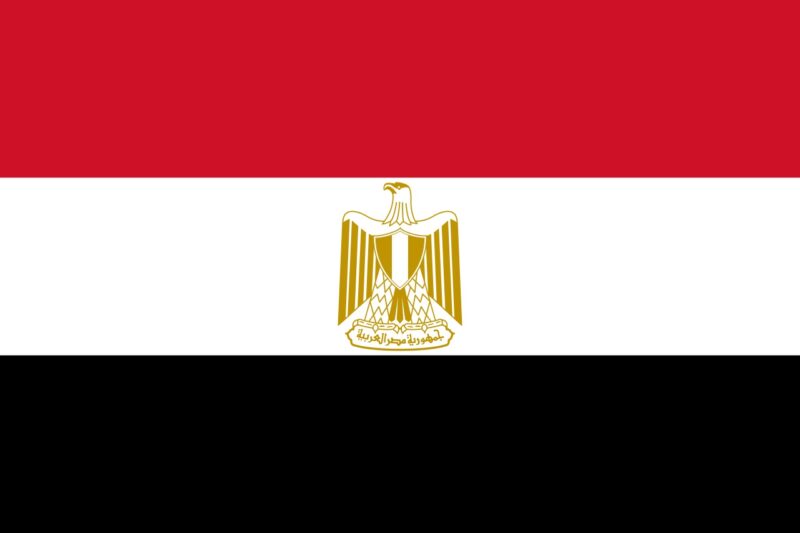Danger Levels:
- North Sinai and South Sinai (excluding coastal areas from Dahab to Sharm El Sheikh)
- Level 3: Avoid travel. (Travel advisory) (Consider evacuating as soon as possible if you are already there.) (Ongoing)
- Libyan Border Area
- Level 3: Avoid travel. (Travel advisory) (Ongoing)
- Western and Southern Desert Areas
- Coastal areas from Marsa Matrouh to Alexandria, urban and agricultural areas in Fayoum Governorate, north of Wadi Natron in Beheira Governorate, east of the Western Desert Highway in Upper Egypt, main road connecting Marsa Matrouh to Siwa, Siwa Oasis, main road from Giza Governorate to Farafra Oasis in New Valley Governorate (known as Oasis Road), Bahariya Oasis, Black Desert Area, White Desert Area, Farafra Oasis, and Wadi El Rayan Natural Protectorate including Wadi El Hitan
- Level 1: Exercise caution. (Some reduction)
- Other areas
- Level 2: Avoid non-essential travel. (Ongoing)
- Coastal areas from Marsa Matrouh to Alexandria, urban and agricultural areas in Fayoum Governorate, north of Wadi Natron in Beheira Governorate, east of the Western Desert Highway in Upper Egypt, main road connecting Marsa Matrouh to Siwa, Siwa Oasis, main road from Giza Governorate to Farafra Oasis in New Valley Governorate (known as Oasis Road), Bahariya Oasis, Black Desert Area, White Desert Area, Farafra Oasis, and Wadi El Rayan Natural Protectorate including Wadi El Hitan
- Greater Cairo Metropolitan Area and other areas
- Level 1: Exercise caution. (Ongoing)
Points:
- In the Sinai Peninsula (excluding some areas), the Egyptian government is conducting anti-terrorist operations, but attacks on military and security authorities continue, resulting in casualties. Travel to these areas is strongly discouraged. If you are already there, consider evacuating as soon as possible.
- In the Western and Southern Desert Areas (excluding the areas mentioned), there is a risk of being caught up in anti-terrorist operations conducted by the Egyptian government. The security situation in the Libyan border area remains unstable, so travel to this region is also advised against.
- In areas outside the Greater Cairo Metropolitan Area, including those mentioned above, the risk of terrorism cannot be ruled out. Exercise caution and stay informed about the local situation.
Details:
- Overview
- (1) In February 2011, President Mubarak resigned due to rapidly deteriorating social and security conditions. Mohamed Morsi of the Muslim Brotherhood’s “Freedom and Justice Party” became president in June 2012 but was removed by the military in July 2013 after a year in office, following large-scale protests. Since then, clashes, protests, and terrorist attacks have persisted.
- (2) Since President El-Sisi’s appointment in June 2014, demonstrations and related clashes have decreased due to strengthened security measures. He was re-elected in December 2023.
- (3) Terrorist attacks targeting military, police, judicial authorities, Coptic Christians, and related facilities have continued intermittently. Following the Alexandria and Gharbiya church bombings in April 2017, the Egyptian government declared a state of emergency, which was renewed until October 2021.
- (4) After the Sinai mosque attack in November 2017, the government launched an ongoing anti-terrorist campaign, with casualties reported. Additionally, measures are in place to prevent illegal border crossings and arms smuggling in the western desert.
- (5) Since the July 2013 coup, no incidents specifically targeting Japanese nationals or interests have been reported. However, attacks on military, security, and judicial institutions have occurred in Cairo and its suburbs, with incidents involving foreign tourists, such as the December 2018 explosion near the pyramids and a December 2022 attack on a checkpoint in Ismailia.
- Regional Situation
- (1) North Sinai and South Sinai (excluding coastal areas from Dahab to Sharm El Sheikh)
- Level 3: Avoid travel. (Ongoing) Travel is strongly discouraged due to ongoing terrorist operations and attacks. Immediate evacuation is advised if you are already in the area.
- (2) Libyan Border Area
- Level 3: Avoid travel. (Ongoing) The security situation in Libya is unstable. Avoid travel and stay away from the Libyan border area.
- (3) Western and Southern Desert Areas (excluding noted areas)
- Level 2: Avoid non-essential travel. (Some reduction) There is a risk of involvement in anti-terrorist operations. Avoid unnecessary travel to these areas. If travel is unavoidable, consult the latest information from the Japanese embassy and local sources.
- Note:
- Coastal areas from Marsa Matrouh to Alexandria
- Urban and agricultural areas in Fayoum, north of Wadi Natron in Beheira, and east of the Western Desert Highway in Upper Egypt
- Roads and areas previously mentioned as partially reduced
- (4) Greater Cairo Metropolitan Area and other regions
- Level 1: Exercise caution. (Ongoing) Security measures are in place, but incidents such as the December 2018 explosion and multiple incidents in 2019 highlight ongoing risks. Stay informed and exercise caution.
- (1) North Sinai and South Sinai (excluding coastal areas from Dahab to Sharm El Sheikh)
- Travel Precautions
- Travelers should be aware of potential terrorist threats and take appropriate measures to avoid danger. Stay updated with information from the Japanese Ministry of Foreign Affairs, the Japanese embassy in Egypt, and local news. Inform family and friends of your travel itinerary and contact information.
- Be mindful of increasing incidents of terrorism targeting public places worldwide. Exercise caution around tourist sites, event venues, restaurants, hotels, shopping malls, public transport, and religious facilities.
- Neighboring Countries
- Be aware that there are also danger advisories for neighboring countries such as Israel, Sudan, and Libya. Exercise caution when traveling near these borders.





Comment